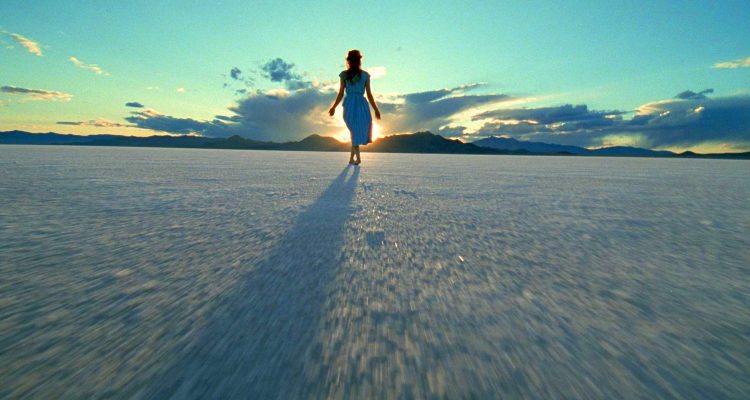From time to time it’s good to remind the world (and ourselves) that we are The Playlist, and in addition to being movie lovers, we are also obsessed with music, specifically movie music. It also helps when a director gives us good reason to take a long look at their musical choices — i.e. by making a movie about music. Thankfully, impressionistic mastermind Terrence Malick has finally done so with his ephemeral, soul-searching new movie, “Song To Song.” It’s a film, like much of his work has been, about the search for divinity amid the tumult of life – only this time, the search goes… song to song.
The director’s latest isn’t our favorite (check out our C-grade review), but it’s nevertheless hard not to be dazzled by his visual bravado and the raw emotion that he can elicit from a waltzing camera (courtesy of his longtime partner Emmanuel Lubezki). Much of which comes from the outlandish beauty that Malick seems to see in the ordinary mundaneness of existence (which, it must be said, is skewed some by the outlandishly beautiful people he casts). When Malick is at his best, his contemplative cinematography resonates as though we are all, in his patient hands, bearing witness to the divinity of everyday life. But just as key to his success, and so often overlooked, is the evocative music — and the provocative silence — that so perfectly harmonize with his whirling visual aesthetic.
So to celebrate “Song To Song” we have set out here to explore the music that’s most crucial to Malick’s films, the songs that most moved us, the motifs most vital, and, generally, the best Malick Mixtape we can put together.
READ MORE: The 15 Best Shots In Terrence Malick’s Movies
“Badlands”
Certainly the key piece of music in Malick’s bleak and beautiful (and comparatively restrained) debut film is German composer Carl Orff’s “Gassenhauser.” A short, nearly sweet piece of music, “Gassenhauser” has been used time and again in scores since being used as the foundational theme in “Badlands,” and which was initially earmarked for use in Irvin Kershner’s version of “Dirty Harry” that Malick worked on and that was never made (Don Siegel ended up making the “Dirty Harry” we know today). For all its familiarity though, the composition is synonymous with Malick’s film, in part for the stark tonal juxtaposition it evokes, and the work it does to help worm us into the disaffected minds of our misguided and potentially-psychotic lovers-on-the-lamb. Similarly, for all the visual splendor captured in the natural landscapes, the brutality committed by Martin Sheen’s Kit is depicted with a cool distance, perfectly represented in the joyous adventurousness of Orff’s piece. The eloquent contrast is so distinct and so quintessential that the song was essentially ripped off (read: paid homage to) 20 years later for another lovers-on-the-lamb picture, “True Romance,” by future Malick collaborator Hans Zimmer.
“Days Of Heaven”
Malick’s second feature was really the first to give a glimpse into the true form of the divisive filmmaker. “Badlands” kicked off his knack for troublesome productions and endless tinkering, but “Days Of Heaven” was really the first to highlight just how extreme Malick could be (the key examples being that Richard Gere’s sourness toward the director continued for at least two decades and that editing took over three years). Some of which translated over to the score of Italian composer Ennio Morricone. Malick cut the first version of the film to Morricone’s score for Bernardo Bertolucci’s “1900,” which he then sent to Morricone. Malick then visited the composer in Italy and attempted to exert his usual level of overbearing control. “He didn’t know me very well, so he made suggestions, and in some cases, gave musical solutions. This kind of annoyed me because he’d say: ‘This thing . . . try it with three flutes.’ Something impossible! So, to humor him, I would do it with three flutes and then he’d decide to use my version after all,” Morricone said in the doc, “Rosy-Fingered Dawn.” Furthermore, Malick rearranged Morricone’s score so that only one scene ended up featuring the piece of music Morricone had composed for it. The result though is an incredibly resonant and pastoral piece of work, as beautiful as it is haunting, which earned Morricone his first Oscar nomination.

